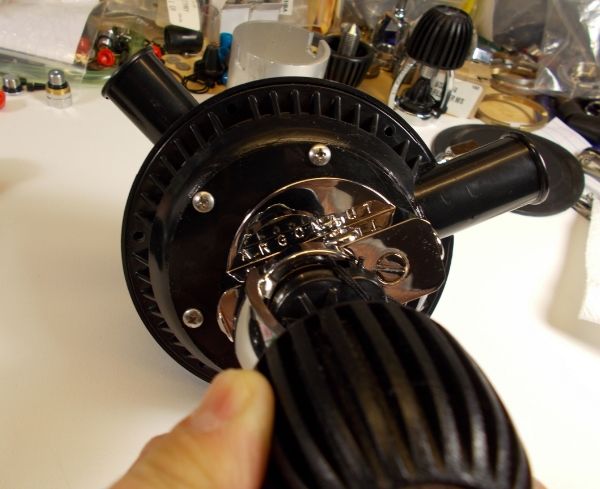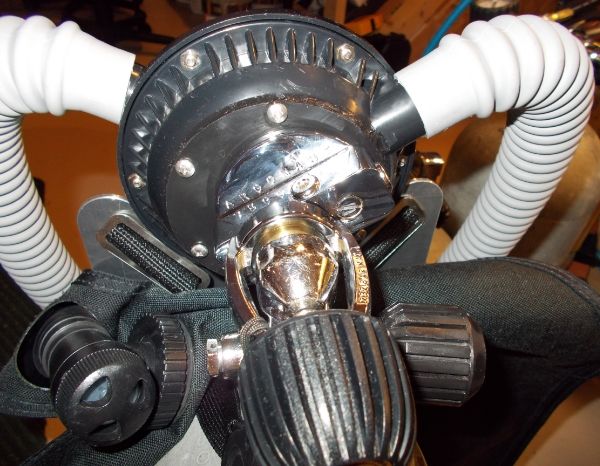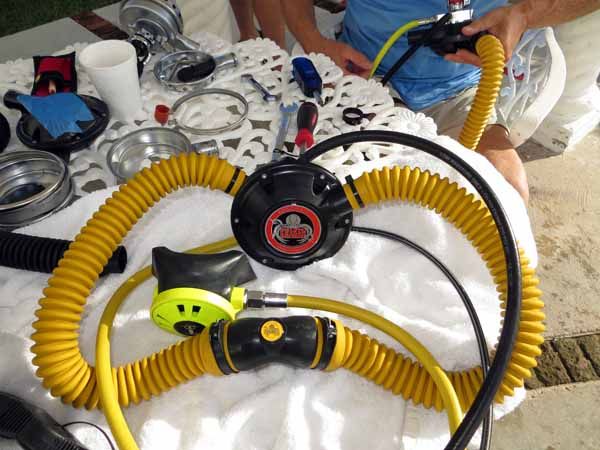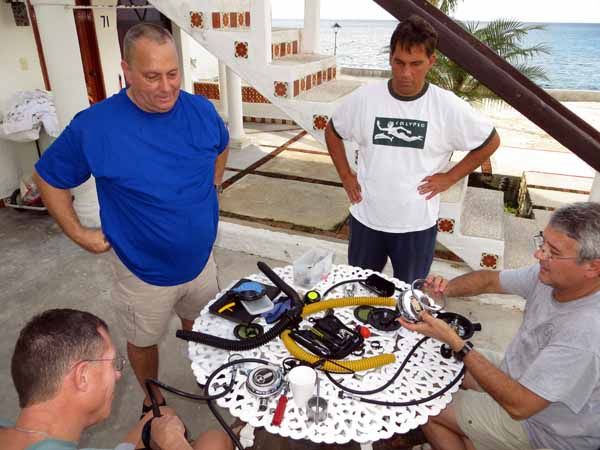Just because somebody does not speak English fluently does not mean they are slow in the head and should be coddled. It is not valid, an opinion is that, but validity, nah. But your story Sam only furthers, my opinion, that for the most part early, and a lot of current dive gear, is to use the word of the day, trumped up. In comparison to what the Argonaut is, can anybody seriously think one bit of engineering and testing went into the New Mistral or the Trieste? Yeah, marketing research, engineering, no. I am not at liberty to say much more, but parts and pieces of the Argonaut have been lab tested as well as continuing tests in real dives by several very "experienced" divers (not me) as I understand it.
The Argonaut, if and when it is produced, is not a modified anything. It is a brand new complete regulator. It does not reuse or cannibalize any parts. The prototype test units of course are not, that is why they are called test units. The Phoenix nozzle does install into existing regulators, DA/RAM/Navy, the Argonaut is intended, best I know, to stand alone.
I think what is going on is that the regulator hoarders have realized, that for those who actually dive and not simply collect, they will no longer desire them or the parts hoarded up and thus the value of the old junk will dry up. Already we have seen this, banjo fittings were hoarded up and massive price gouging, now they are cheap and plentiful, hoses, same thing, main diagrams, same thing, on and on. There is probably a bunch of PO's collectors out there who thought all that pile of old duckbills and hoses they ran the price up on was going to be like gold and now it is worthless.
As a diver, I need things that work and upon which I can count, not old, moldy crap down in a basement, sign me up for a trumped up Argonaut because, you know, I am an experienced diver and almost photographer enthusiast who occasionally tech dives and has been known to go kinda deep and wrestle bull sharks for fun. Oh, and the only thing I collect, memories.
N
The Argonaut, if and when it is produced, is not a modified anything. It is a brand new complete regulator. It does not reuse or cannibalize any parts. The prototype test units of course are not, that is why they are called test units. The Phoenix nozzle does install into existing regulators, DA/RAM/Navy, the Argonaut is intended, best I know, to stand alone.
I think what is going on is that the regulator hoarders have realized, that for those who actually dive and not simply collect, they will no longer desire them or the parts hoarded up and thus the value of the old junk will dry up. Already we have seen this, banjo fittings were hoarded up and massive price gouging, now they are cheap and plentiful, hoses, same thing, main diagrams, same thing, on and on. There is probably a bunch of PO's collectors out there who thought all that pile of old duckbills and hoses they ran the price up on was going to be like gold and now it is worthless.
As a diver, I need things that work and upon which I can count, not old, moldy crap down in a basement, sign me up for a trumped up Argonaut because, you know, I am an experienced diver and almost photographer enthusiast who occasionally tech dives and has been known to go kinda deep and wrestle bull sharks for fun. Oh, and the only thing I collect, memories.
N









